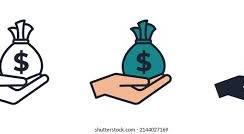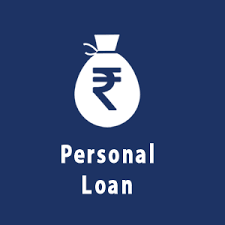When unexpected expenses arise or you need funds for a major purchase, a personal loan can be a practical financial solution. Whether you’re consolidating debt, financing a wedding, covering medical bills, or improving your home, personal loans offer flexibility and relatively quick access to funds. But before you apply, it’s essential to understand how personal loans work, their benefits, potential pitfalls, and how to choose the best option for your needs.
In this article, we’ll explore everything you need to know about personal loans, including their types, eligibility, benefits, risks, and how to apply smartly.

personal loan
You can also read on: How to borrow money in USA
What is a Personal Loan?
A personal loan is a type of unsecured loan provided by banks, credit unions, or online lenders. “Unsecured” means you don’t need to provide collateral (such as your home or car) to secure the loan. Instead, lenders assess your creditworthiness, income, and repayment history to determine your eligibility.
You can also read on : How to get a 1000 loan online today
Key Features of Personal Loans:
Fixed or variable interest rates
Fixed repayment terms (typically 1–7 years)
Lump-sum disbursement
Monthly installment repayments
No collateral required (in most cases)
Top Reasons People Use Personal Loans
Debt Consolidation
Combine multiple high-interest debts (like credit cards) into a single loan with a lower interest rate.Medical Expenses
Cover unexpected hospital bills or procedures not covered by insurance.Home Renovation
Improve or repair your home without dipping into your savings.Major Purchases
Finance large expenses like furniture, electronics, or appliances.Weddings or Events
Pay for special occasions without accumulating credit card debt.Emergency Situations
Access quick funds for urgent needs like car repairs or family emergencies.
Types of Personal Loans
There are various types of personal loans depending on the borrower’s needs and financial profile:
1. Unsecured Personal Loans
No collateral required
Higher interest rates for lower credit scores
2. Secured Personal Loans
Backed by collateral (e.g., savings account or asset)
Lower interest rates, higher approval chances
3. Fixed-Rate Loans
Predictable monthly payments
Ideal for budgeting
4. Variable-Rate Loans
Interest rates fluctuate with market changes
Can start lower but may increase over time
5. Debt Consolidation Loans
Specifically for merging multiple debts into one
Helps reduce interest and manage payments

personal loan
How to Qualify for a Personal Loan
To get approved, lenders will typically review:
✅ Credit Score
Most lenders prefer a score of 600 or higher, but better rates are given to those with 700+.
✅ Income
Stable and sufficient income to repay the loan.
✅ Debt-to-Income Ratio
Your total monthly debt payments divided by your monthly income. Lower ratios are favorable.
✅ Employment History
Steady employment increases your chances of approval.
✅ Loan Amount and Purpose
Clearly define how much you need and why—some lenders may restrict certain uses.
Pros and Cons of Personal Loans
✔️ Benefits
No Collateral Needed:
Most personal loans don’t require assets as security.Fixed Interest Rates:
Makes budgeting easier.Flexible Usage:
Can be used for almost any purpose.Quick Disbursement:
Many lenders offer same-day or next-day funding.Credit Score Improvement:
Timely repayments may boost your credit history.
❌ Drawbacks
High Interest Rates for Poor Credit:
Borrowers with low credit scores may face steep APRs.Fees and Penalties:
Watch out for origination fees, prepayment penalties, and late fees.Fixed Repayment Obligation:
You must repay monthly regardless of your financial situation.Potential Debt Trap:
Mismanagement can lead to deeper financial trouble.
How to Compare Personal Loan Offers
Before committing, compare different lenders using these key criteria:
🔹 Annual Percentage Rate (APR):
This includes interest and any fees—use it for apples-to-apples comparisons.
🔹 Loan Term:
Shorter terms mean higher payments but less interest overall.
🔹 Monthly Payment:
Ensure it fits your budget comfortably.
🔹 Fees:
Look out for origination fees, application fees, late payment fees, and prepayment penalties.
🔹 Lender Reputation:
Read reviews and check for accreditation from financial authorities or the Better Business Bureau (BBB).
How to Apply for a Personal Loan
Follow these steps for a smooth loan application process:
✅ Step 1: Check Your Credit Report
Get a free copy at AnnualCreditReport.com and resolve any errors.
✅ Step 2: Calculate How Much You Need
Borrow only what you need. Avoid overborrowing just because you qualify for more.
✅ Step 3: Get Prequalified
Many lenders offer a soft credit check to estimate your rate without impacting your score.
✅ Step 4: Compare Lenders
Use online tools to shop around and compare offers from banks, credit unions, and fintech lenders.
✅ Step 5: Submit an Application
Provide documents like proof of ID, proof of income, tax returns, and employment verification.
✅ Step 6: Review the Terms
Read the loan agreement thoroughly. Understand your APR, payment schedule, and penalties.
✅ Step 7: Receive Funds
Once approved, the money may be deposited within 1–5 business days.
Tips for Managing Your Personal Loan Responsibly
Make Payments on Time:
Set up automatic payments to avoid missed due dates.Avoid Late Fees:
They can add up quickly and hurt your credit.Don’t Use It for Non-Essentials:
A personal loan isn’t “free money.” Use it wisely.Pay More Than the Minimum:
If possible, pay off early to save on interest—but confirm there’s no prepayment penalty.Communicate With Your Lender:
If you face financial hardship, request a temporary deferment or payment plan.
Alternatives to Personal Loans
Before borrowing, consider these other options:
0% APR Credit Card (if repaid during the promo period)
Borrowing from Family/Friends
Home Equity Loan or HELOC (if you own a home)
Emergency Fund Savings
Salary Advance
Each comes with its pros and cons, so weigh them carefully.
Best Personal Loan Providers in 2025 (U.S.)
| Lender | APR Range | Loan Amount | Term Length | Best For |
|---|---|---|---|---|
| SoFi | 8.99%–25.81% | $5,000–$100,000 | 2–7 years | High loan amounts |
| Marcus by Goldman Sachs | 6.99%–24.99% | $3,500–$40,000 | 3–6 years | No fees |
| LightStream | 7.99%–25.99% | $5,000–$100,000 | 2–12 years | Low rates for good credit |
| Upstart | 7.8%–35.99% | $1,000–$50,000 | 3–5 years | Borrowers with no credit history |
| LendingClub | 8.98%–35.99% | $1,000–$40,000 | 3–5 years | Debt consolidation |
Note: Rates vary based on credit profile, loan term, and lender’s criteria.
Conclusion
Personal loans can be a valuable financial tool when used wisely. They offer flexibility, fixed repayments, and fast access to funds. However, like any financial product, they come with responsibilities. Before borrowing, assess your financial situation, compare lenders, and borrow only what you need. When managed well, a personal loan can improve your financial stability—not harm it.
Frequently Asked Questions (FAQs)
❓Is a personal loan better than a credit card?
It depends. For larger, planned expenses or debt consolidation, personal loans usually have lower interest rates than credit cards.
❓Do personal loans affect credit score?
Yes. Applying may result in a temporary dip due to a hard inquiry. Timely repayments can improve your score over time.
❓How fast can I get approved?
Some online lenders approve applications and disburse funds within 24 hours.
❓Can I pay off a personal loan early?
Yes, but check if your lender charges prepayment penalties.

Leave a Comment